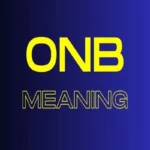Introduction:
In recent years, a groundbreaking new sport has emerged, blending the worlds of physical movement and music. Known as harmonicode sport, this innovative discipline is capturing attention for its unique combination of harmony, coordination, and athleticism. But what exactly is harmonicode sport, and why is it gaining traction in various fitness communities?
In this comprehensive article, we’ll explore what harmonicode sport entails, its benefits, applications, and the challenges faced by athletes who participate. Whether you’re a fitness enthusiast or simply curious about the fusion of music and movement, you’ll gain insight into how this exciting new sport is revolutionizing the way we think about exercise and competition.
1. Detailed Explanation of Key Concepts
To understand harmonicode sport, it’s essential to first break down its core components: music and movement. In this sport, athletes synchronize their physical movements to a harmonic sequence of sounds, creating an experience that is part choreography, part athletic competition.
Subheading 1.1: What is Harmonicode Sport?
Harmonicode sport is a fitness discipline that combines rhythmic movement with musical compositions, focusing on synchronizing bodily motions to a given harmony. Unlike traditional sports where physical prowess is the sole focus, harmonicode requires athletes to move in time with music, blending artistry with physical fitness.
- Rhythmic Movement: Athletes perform a series of movements, often similar to gymnastics or dance routines, to the beat of carefully selected music.
- Musical Precision: The key challenge in harmonicode sport is achieving precision, not only in movement but also in rhythm. Every step, jump, or spin must align perfectly with the harmonic structure of the soundtrack.
Subheading 1.2: The Evolution of Harmonicode Sport
Harmonicode sport originated as a niche activity in performance arts and quickly evolved into a competitive discipline. Inspired by the artistic components of dance and gymnastics, it integrates athletic prowess with musicality, creating a hybrid that appeals to a wide range of participants.
- Statistical Data: According to a survey by the Global Association of International Sports, interest in harmonicode sport has increased by 30% in the past two years, particularly among younger athletes.
2. Importance and Benefits of Harmonicode Sport
Harmonicode sport is more than just a blend of music and movement—it offers a range of physical, cognitive, and emotional benefits. From improving coordination to enhancing mental focus, this sport offers advantages that go beyond the traditional fitness model.
Subheading 2.1: Physical Benefits
One of the most apparent benefits of harmonicode sport is its ability to improve overall physical fitness. Athletes participating in this sport develop core strength, flexibility, and endurance, all while moving in sync with the rhythm.
- Enhanced Coordination: Synchronizing movement to music requires exceptional hand-eye coordination, balance, and agility, leading to improved neuromuscular function.
- Full-Body Workout: Harmonicode sport engages multiple muscle groups, providing a comprehensive workout. Movements often incorporate cardio, strength training, and flexibility exercises.
Subheading 2.2: Cognitive and Emotional Benefits
Aside from the physical advantages, harmonicode sport offers several cognitive and emotional benefits. By integrating music, athletes can sharpen their focus and build mental resilience, while also experiencing the emotional catharsis that music provides.
- Mental Focus: The act of keeping time with a melody requires high levels of concentration, improving mental acuity and helping athletes sharpen their attention to detail.
- Emotional Expression: Harmonicode sport allows athletes to express emotions through movement, enhancing their emotional intelligence and providing a therapeutic outlet.
You may also like: https://sitthemoon.com/repair-yex382v3yte-air-conditioner/
Subheading 2.3: Cultural and Artistic Impact
Harmonicode sport is unique in its ability to fuse athleticism with artistry. As a result, it bridges the gap between sports and performance art, encouraging creativity alongside competition.
- Artistic Expression: Athletes can choreograph routines that tell a story or convey a theme, using the music and their movements as tools for creative expression.
3. Applications and Use Cases of Harmonicode Sport
Harmonicode sport is a versatile discipline, with applications in fitness, competitive sports, and even entertainment. Whether practiced individually or in teams, its blend of movement and music can be adapted to various environments and objectives.
Subheading 3.1: Competitive Arenas
Harmonicode sport has recently gained recognition in competitive arenas, with championships now being held internationally. Athletes are judged not only on their physical prowess but also on their ability to maintain rhythmic accuracy and artistic interpretation.
- Competitions: In a typical harmonicode sport competition, athletes perform choreographed routines that are scored based on the difficulty of movements, musicality, and overall presentation.
- Team vs. Solo Performances: While many athletes perform solo, harmonicode sport is also gaining popularity as a team sport. Groups work together to execute synchronized movements, making timing and teamwork even more crucial.
Subheading 3.2: Fitness Classes and Gyms
Beyond competition, harmonicode sport is becoming a popular choice for fitness classes, offering an engaging alternative to traditional gym workouts. Fitness instructors are incorporating elements of harmonicode sport into their sessions, helping clients improve their coordination while having fun.
- Cardio and Strength Training: Gyms are increasingly offering harmonicode sport-inspired classes, which combine cardio workouts with rhythmic exercises, providing a fun and challenging way to stay fit.
Subheading 3.3: Entertainment and Performance Arts
Due to its inherent connection with music and choreography, harmonicode sport is finding its way into performance art. Shows that blend athleticism with music, such as circus performances and dance recitals, are increasingly integrating harmonicode sport routines.
- Example: In popular performances like Cirque du Soleil, harmonicode-inspired routines are often used to display a unique combination of strength, grace, and musicality.
4. Challenges and Solutions in Harmonicode Sport
Despite its benefits and applications, harmonicode sport presents its own set of challenges. The combination of precise physical movements and musical synchronization can be difficult for beginners, and even experienced athletes must work hard to master the discipline.
Subheading 4.1: Challenge: Mastering Synchronization
One of the primary challenges athletes face is the need to perfectly synchronize their movements with the music. This requires intense focus and hours of practice to achieve.
- Solution: Athletes should start with simple routines and gradually increase the complexity of their movements. Regular practice with metronomes or beats can help improve timing and precision.
Subheading 4.2: Challenge: Balancing Athleticism with Artistry
Another challenge in harmonicode sport is balancing the athletic side of the sport with the artistic elements. Athletes need to be strong and flexible while also maintaining the grace and rhythm of a performer.
- Solution: Cross-training in dance or gymnastics can help athletes improve their flexibility and fluidity, while strength training ensures they maintain the physical power required for challenging routines.
Subheading 4.3: Challenge: Overcoming Performance Anxiety
The public performance aspect of harmonicode sport can be daunting for some athletes, especially those new to competition or group routines.
- Solution: Mental preparation and relaxation techniques such as deep breathing or visualization can help athletes manage performance anxiety. Practicing routines in front of small groups before competitions can also build confidence.
5. The Future of Harmonicode Sport
Harmonicode sport is still in its early stages, but it has the potential to grow into a major international discipline. With its unique blend of music, movement, and athleticism, the sport appeals to a wide range of participants and audiences alike.
Subheading 5.1: Growth in Popularity
As more people discover the benefits and enjoyment of harmonicode sport, the sport is expected to expand, both in competitive and recreational settings.
- Statistical Data: Research from the International Federation of Sports estimates that by 2025, harmonicode sport will be included in at least 20 major international sporting events, including exhibitions at the Olympics.
Subheading 5.2: Potential for Olympic Inclusion
Given its popularity and the athletic and artistic skills it demands, there is growing interest in including harmonicode sport in the Olympic Games. Its focus on harmony and precision makes it a natural fit for the artistic sports category.
- Current Trends: Sports like figure skating and rhythmic gymnastics already have strong artistic components, suggesting that harmonicode sport could be a natural addition to future Olympic events.
Subheading 5.3: Integration with Technology
As technology continues to advance, harmonicode sport could benefit from innovations such as virtual reality (VR) and artificial intelligence (AI). These tools can be used to enhance training programs, provide real-time feedback, and even simulate competition scenarios.
- Virtual Training: VR can immerse athletes in a simulated environment, allowing them to practice their routines with precision before entering a physical competition space.
Conclusion:
Harmonicode sport represents a unique fusion of movement and music, offering athletes a way to enhance their physical fitness while expressing themselves artistically. From competitive arenas to fitness classes, this sport is rapidly gaining popularity, with its benefits extending far beyond physical health.










